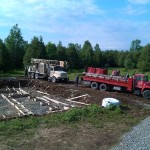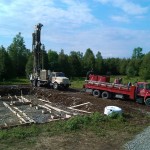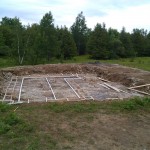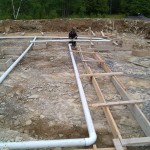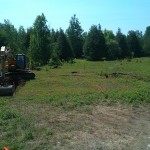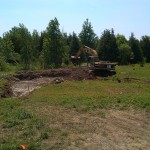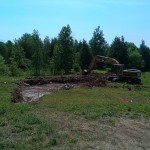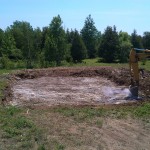After the foundation footings crew came in, the well driller showed up promptly the next day (Tuesday June 10th) to start drilling our well – unlike city folk we have no municipal water or sewer services so we’ve got to drill a well for our water, and have to have a septic system installed to take care of…well, you know 🙂
To select a spot to drill the well, we first started by selecting a location which was the prescribed distance from our septic system location (50′ minimum), and also where would be a good location for the water lines to enter the foundation. From there, the well driller used his “dowsing rods” to check if there is any water below ground, in or around the area. In our case the rods indicated water at a spot close to where we selected so we decided we would have a shot there.
Anyone who knows me, knows that I am not one to generally buy into such things like dowsing, but really it didn’t make any difference to me how the well driller picked the spot – I was going to just trust his judgment regardless of how he made his determination.
They started drilling at maybe 9am and had hit water at 140′ by around 11am. They “shocked” the well (basically the dump in a bunch of chlorine) and capped it off, and were set to return later for a yield test. That day was today, and as it turns out, our well is artesian, which means we hit a good vein of water under positive pressure, that will just flow naturally to the surface through our well – if we ever have a power outage situation, we’ll still be able to get water from our well – great news for a well! We had heard there was good water in this area and this experience seems to have borne that out. Also, perhaps some anecdotal evidence for dowsing rods?
